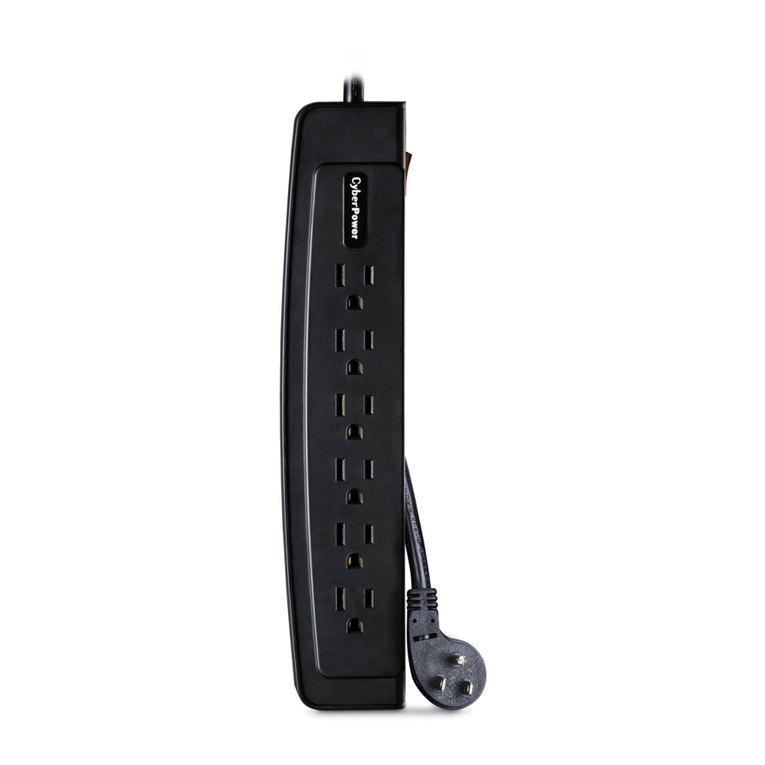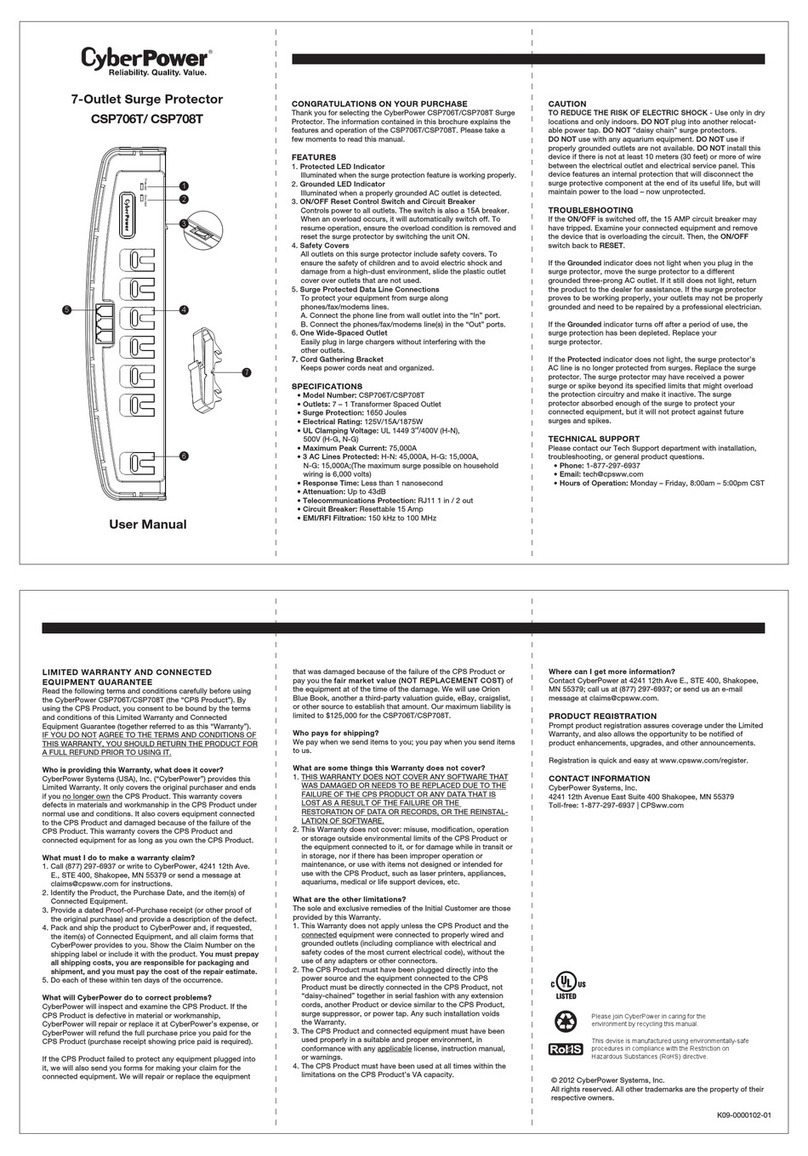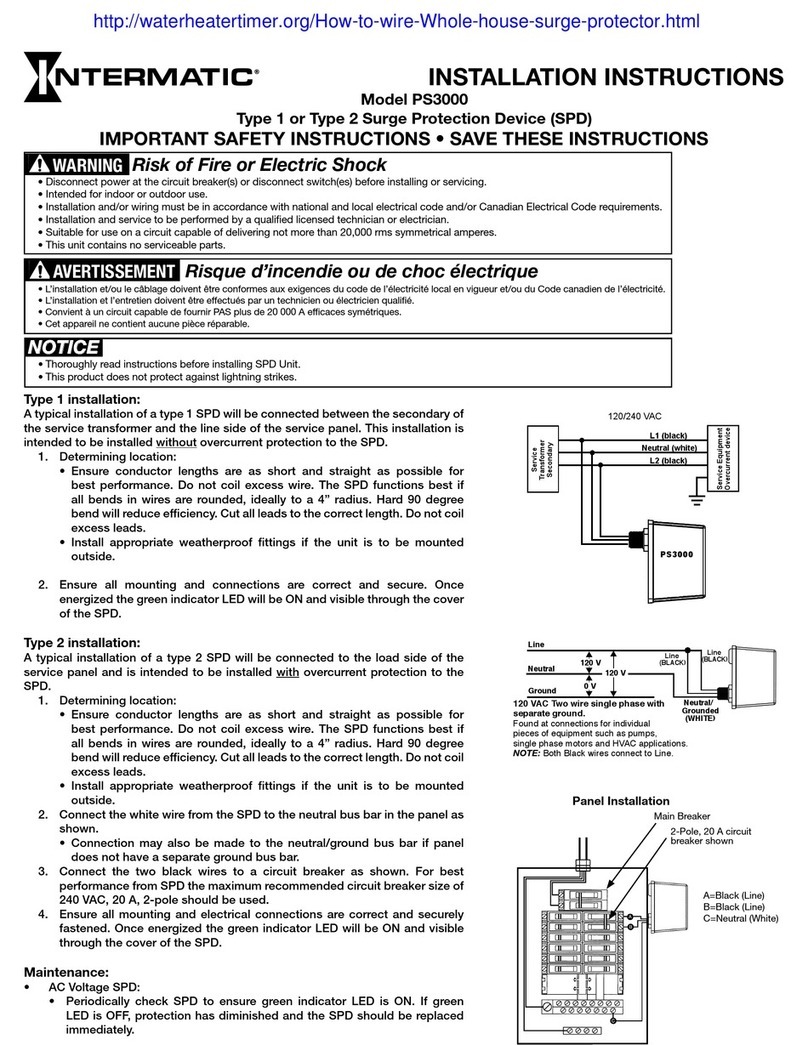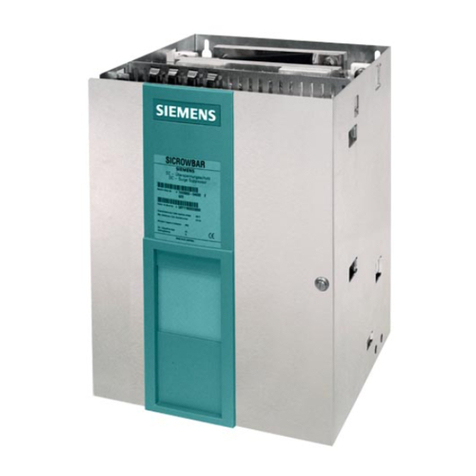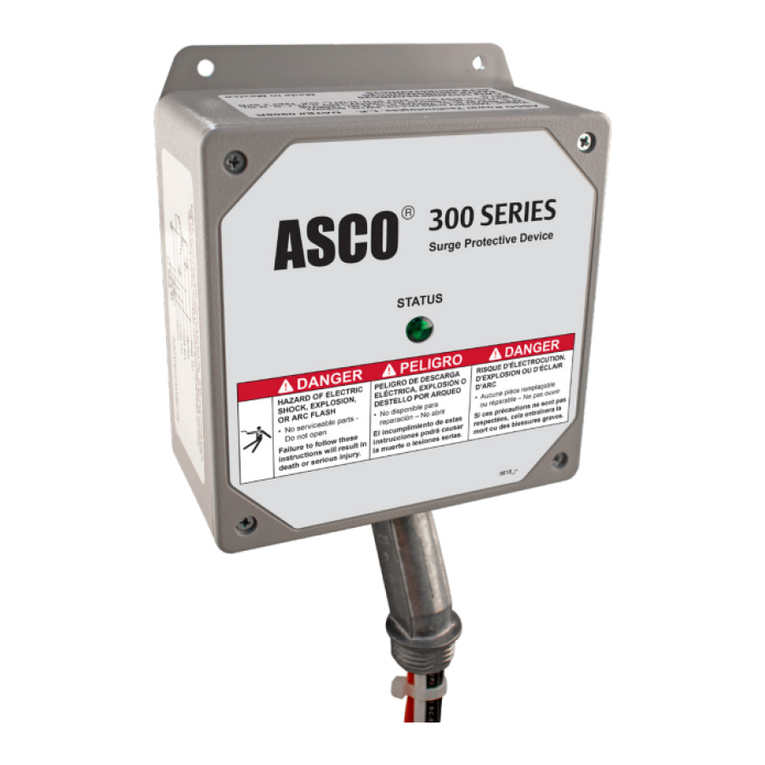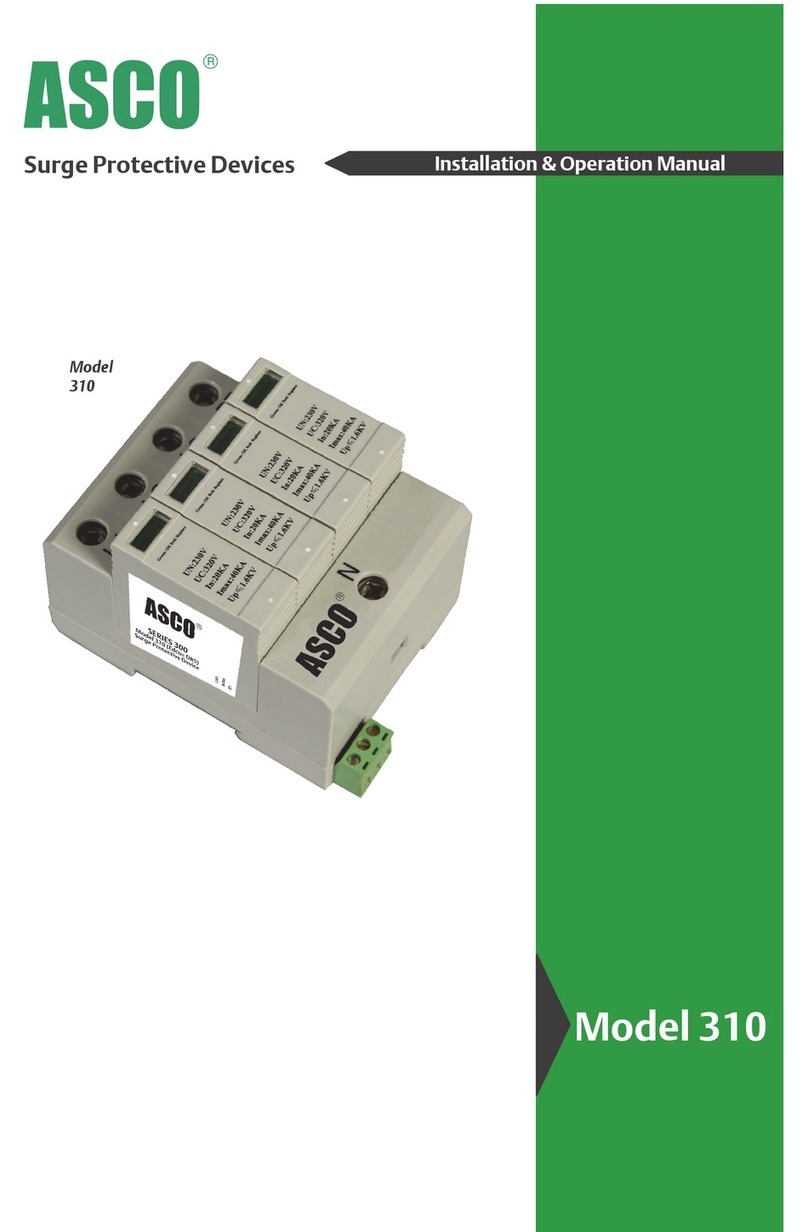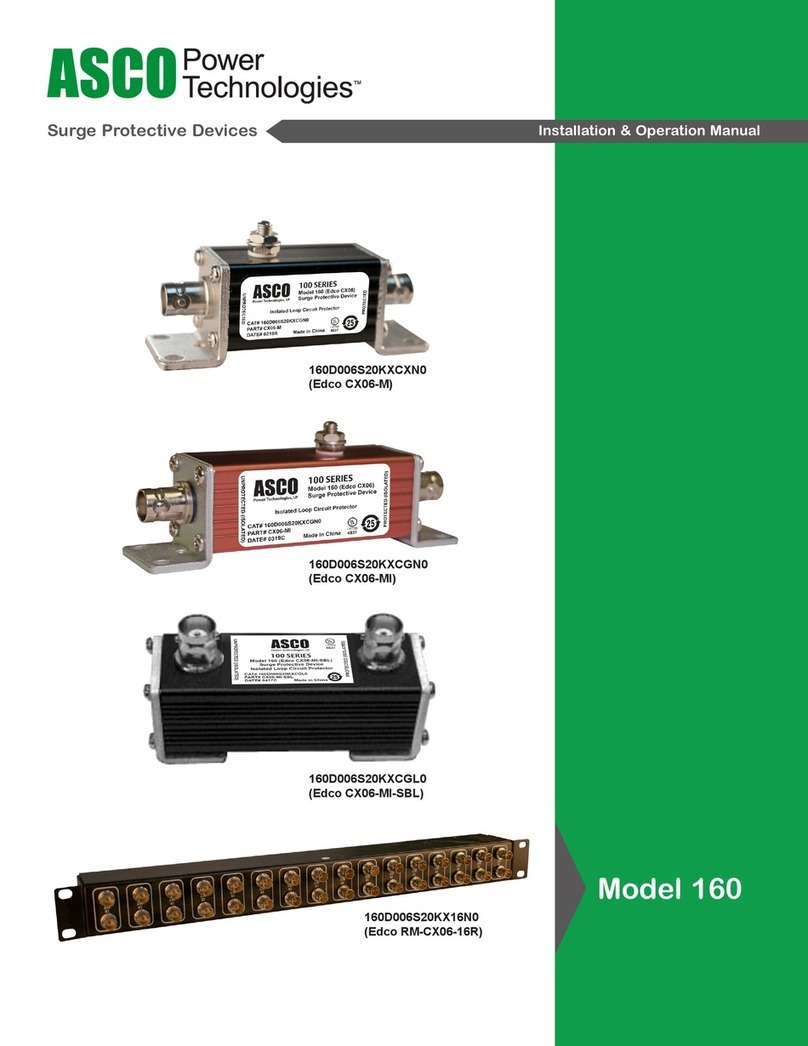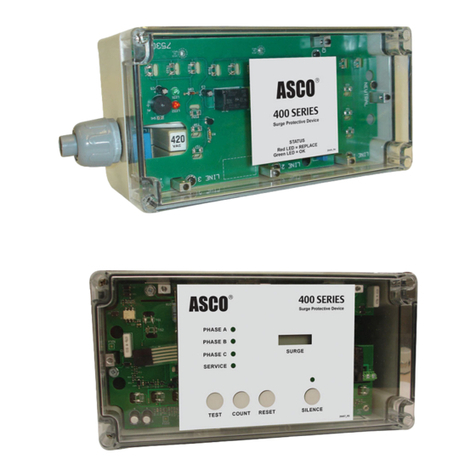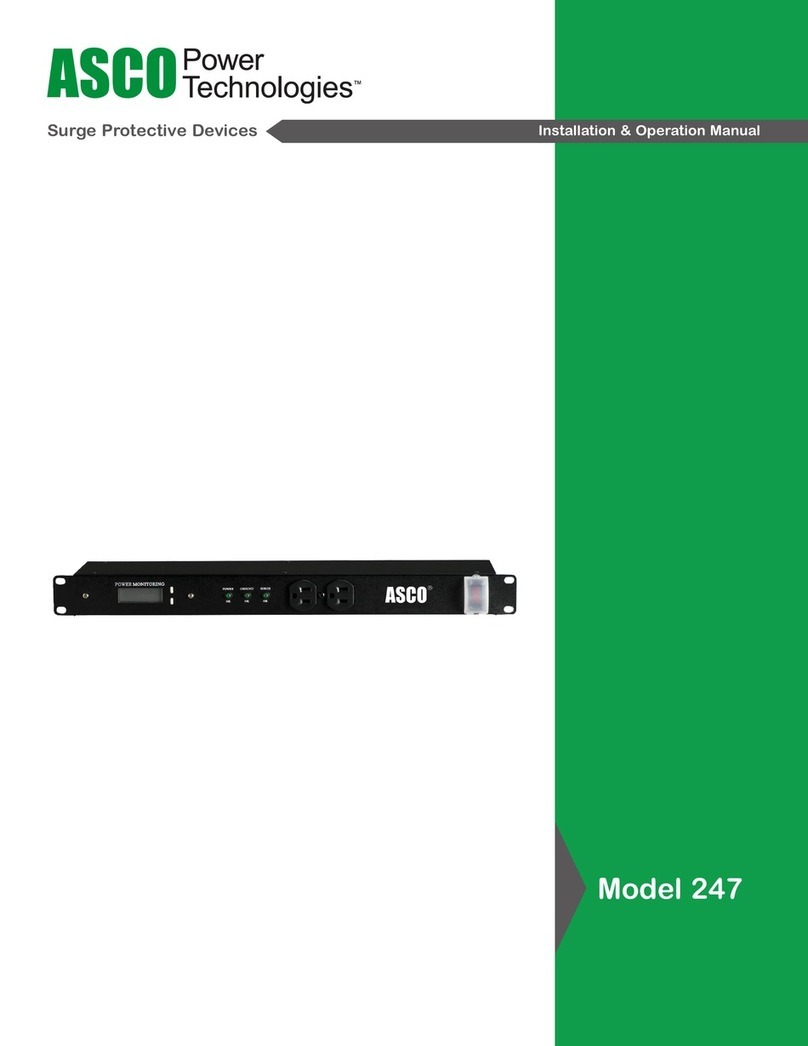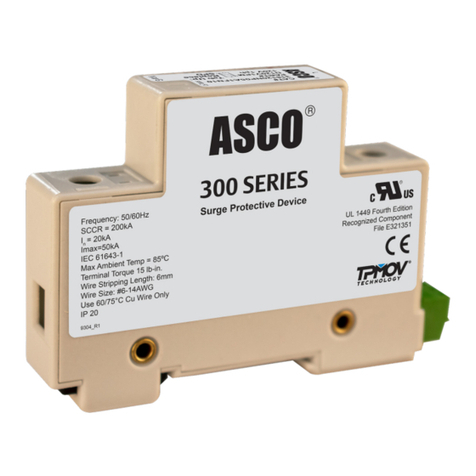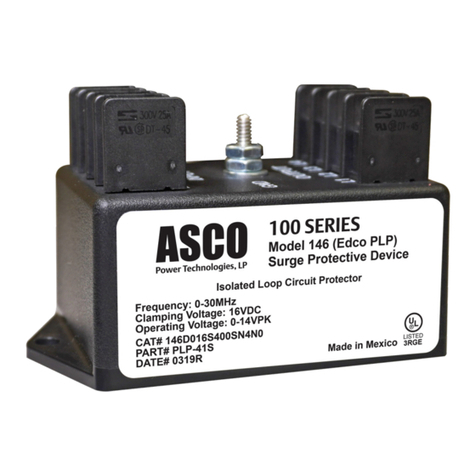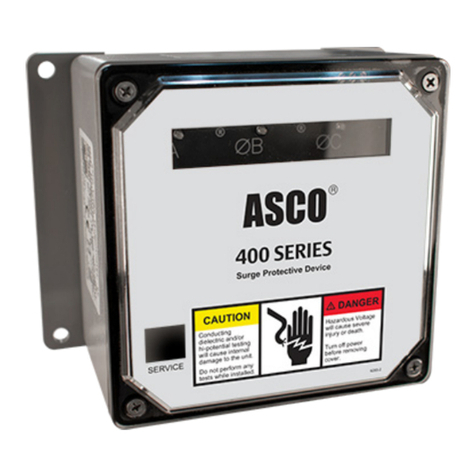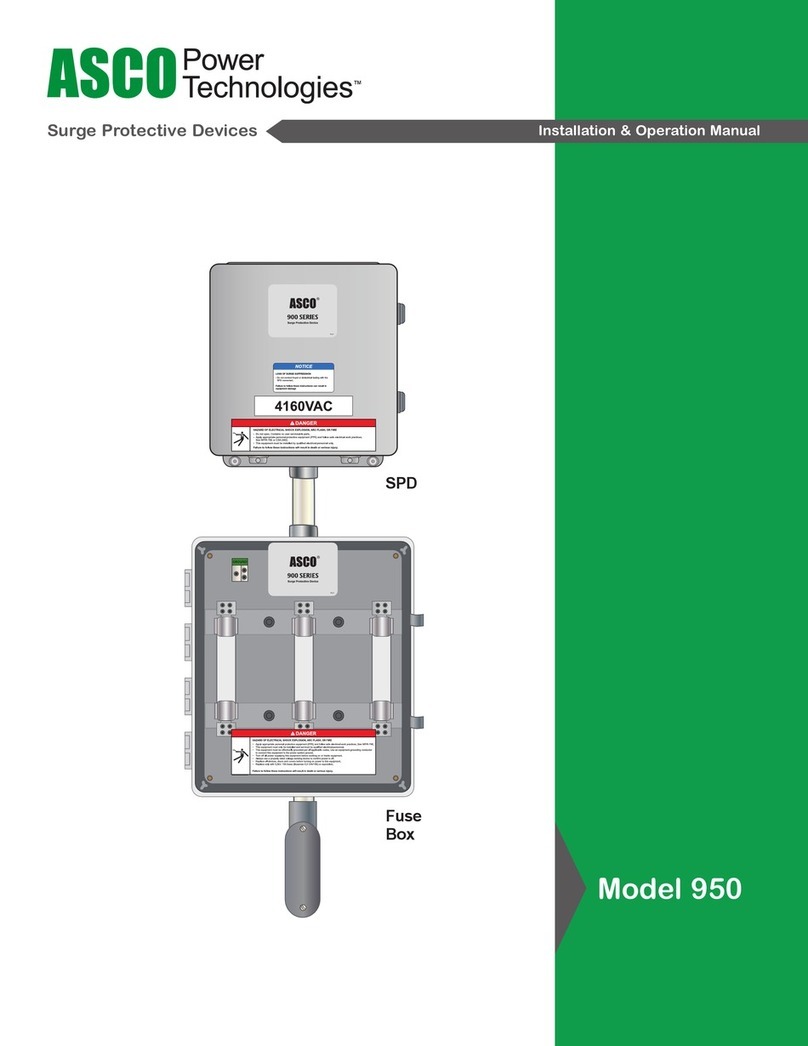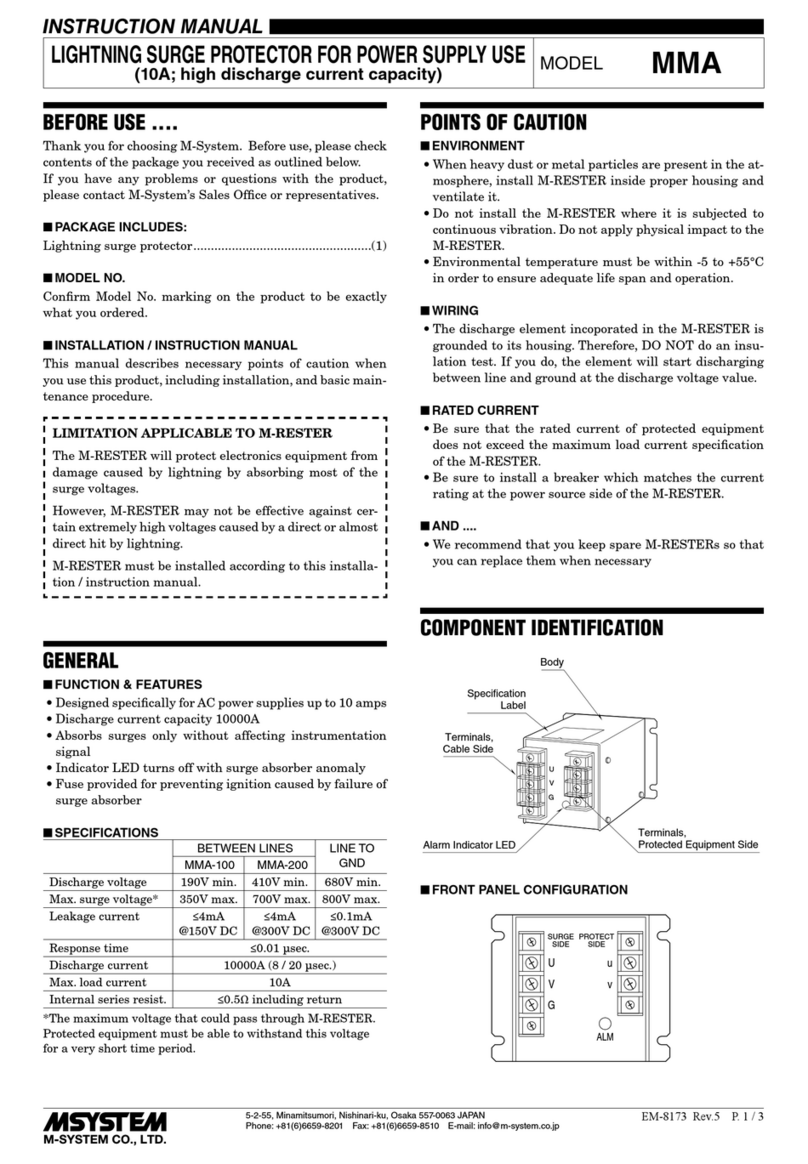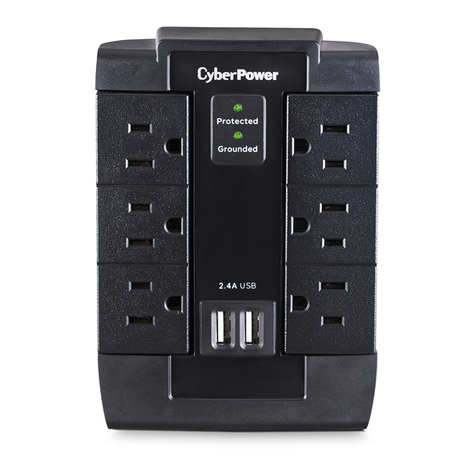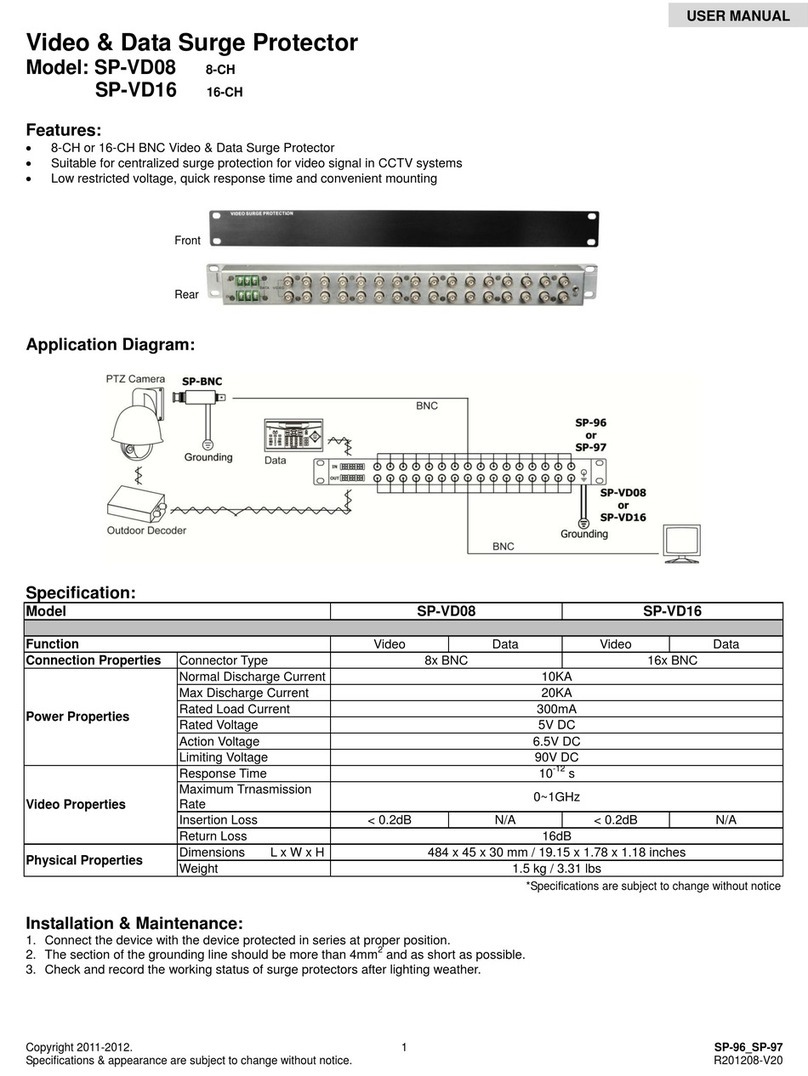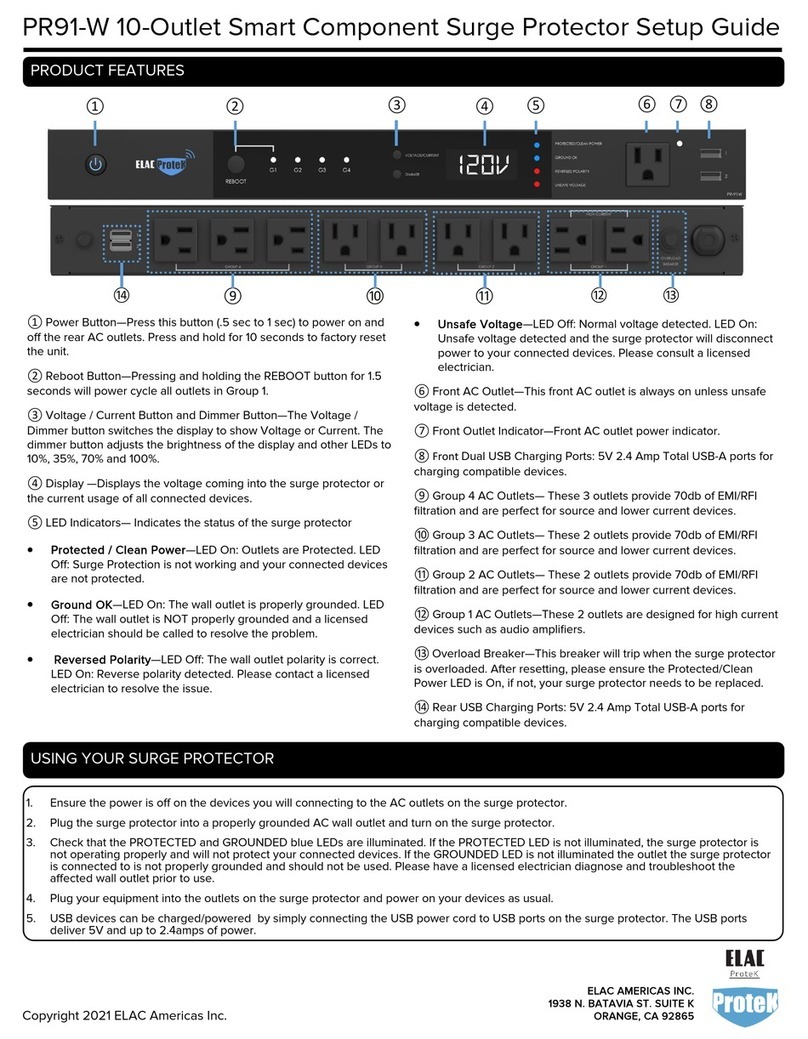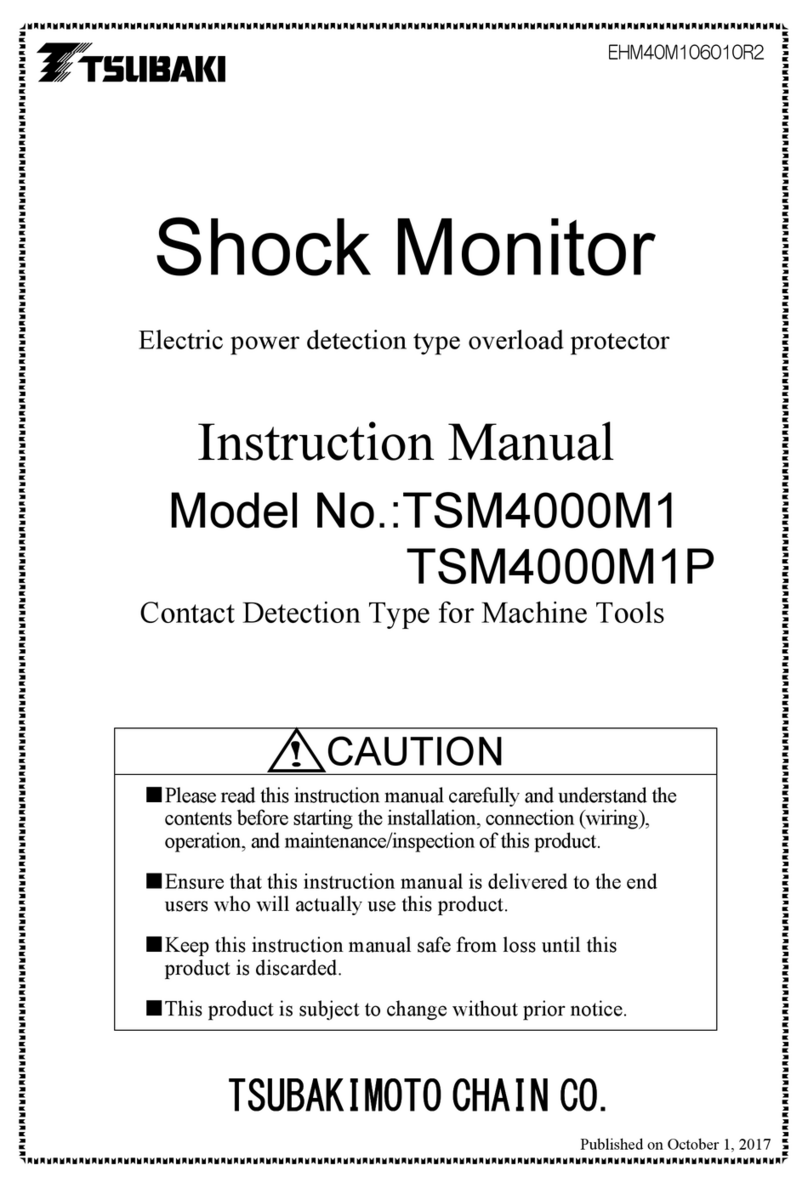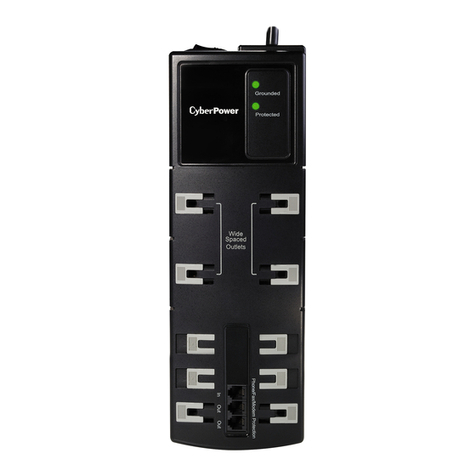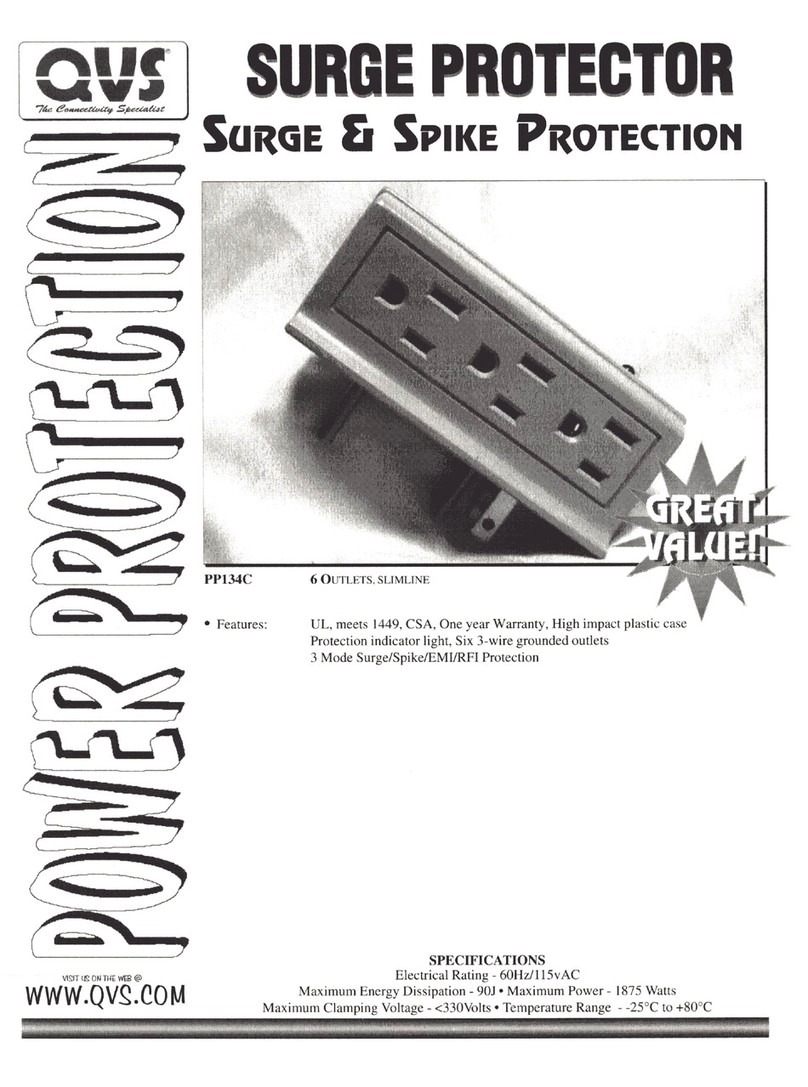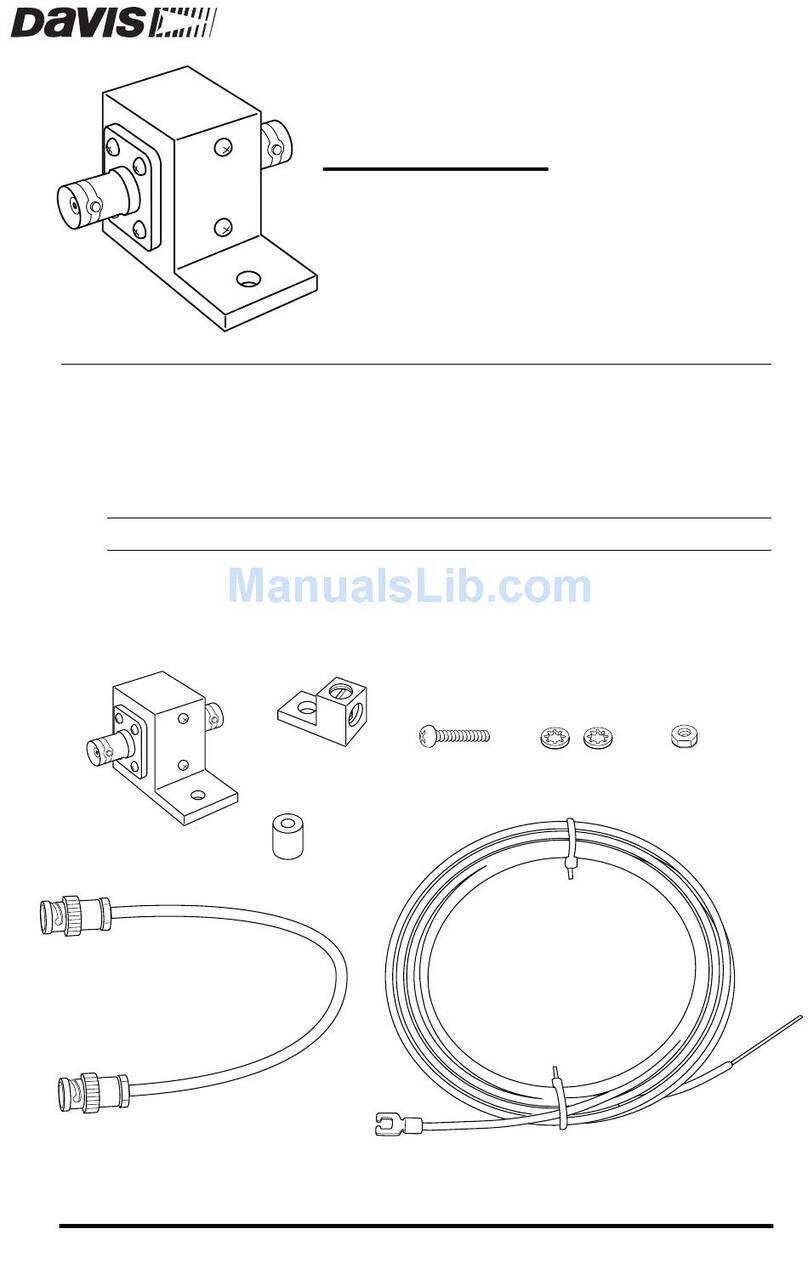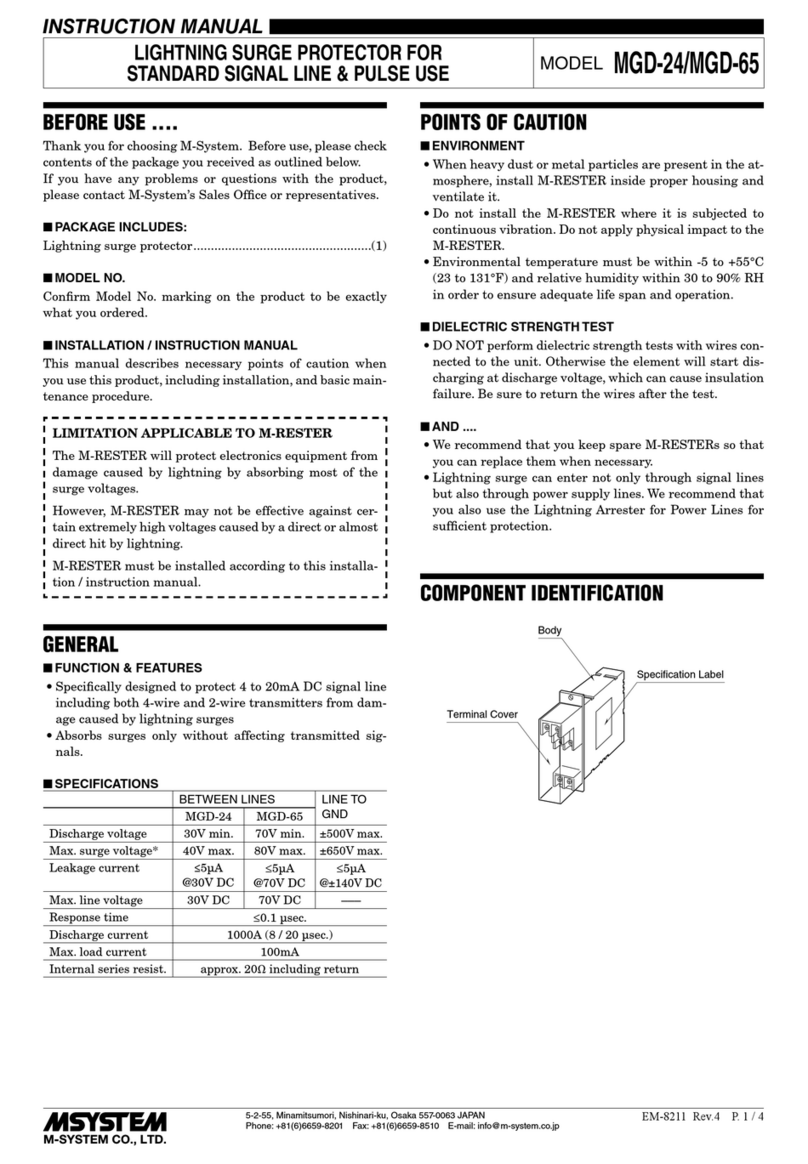
Testing & Service Operator’s Manual
381333-194 B 9
Testing & Service
TRANSFER TEST
Test the Automatic Transfer Switch portion of the 7000
Series 7ACTB at least once a month. This procedure
checks the electrical operation of the Transfer Switch and
Controller. Put the engine–generator starting control (at
the engine–generator set) in automatic mode.
In the following test the generator will start, the load will
be transferred to the Emergency source, then back to the
Normal source. With both sources available the load will
be transferred in a closed–transition mode.
Be sure to close the enclosure door before
proceeding to prevent personal injury in case of
electrical system fault.
Perform the five–step Electrical Operation – Transfer
Test procedure on page 8.
PREVENTIVE MAINTENANCE
Reasonable care in preventive maintenance will insure
high reliability and long life for the 7000 Series 7ACTB.
An annual preventive maintenance program is
recommended.
ASCO Power Services, Inc. is ASCO Power
Technologies service organization for the United
States and Canada. Call 1-800-800-2726 (ASCO) to
request a service call and information on preventive
maintenance agreements.
Annual Inspection Checklist
Hazardous voltage capable of causing shock,
burns, or death is used in this switch. Deenergize
both Normal & Emergency power sources before
performing inspections!
□ Cleaning the 7ACTB enclosure
Brush and vacuum away any excessive dust
accumulation. Remove moisture with a clean cloth.
□ Check the transfer switch contacts.
Bypass, isolate, and withdraw the transfer switch.
Then remove the transfer switch interphase barriers
and check the condition of the contacts. Replace
contacts when pitted or worn excessively. Reinstall
the interphase barriers carefully. See page 15
□ Maintain transfer switch lubrication.
If switch is subjected to severe dust or abnormal
operating conditions, renew factory lubrication on all
movements and linkages. Relubricate solenoid
operator if TS coil is replaced. Don’t use oil; order
lubrication kit 75-100
□ Check all cable connections & retighten them.
REPLACEMENT PARTS
Replacement parts are available in kit form. When
ordering parts provide the Serial No., Bill of Material No.
(BOM), and Catalog No. from the transfer switch
nameplate. Contact your local ASCO Power
Technologies Sales Office or ASCO Power Services,
Inc.
In the United States and Canada
call 1 – 800 – 800 – ASCO ( 2726 )
DISCONNECTING THE CONTROLLER
The harness disconnect plugs are furnished for repair
purposes only and should not have to be unplugged. If
the controller must be isolated, follow these steps.
Bypass–Isolation Switch is energized! Do not
touch isolation contact fingers; shock, burns, or
death could result!
Disconnecting the Plugs
1. Bypass and Isolate the Automatic Transfer Switch.
2. Open the upper enclosure door.
3. Separate the two quick disconnect plugs by
squeezing the latches. Do not pull on the harness
wires.
Reconnecting the Plugs
1. The ATS should be still bypassed and isolated.
2. The two harness plugs and sockets are keyed.
Carefully align the plugs with the sockets and press
straight in until the latches click.
3. Close the enclosure doors.
4. Follow Return to Service instructions on page 16.
MANUAL LOAD TRANSFER
This procedure manually transfers load to other source if
the Transfer Switch or Control Panel are out of service.
Close enclosure doors to prevent personal
injury in case of electrical system fault.
1. Bypass the connected ACTB source. Turn Bypass
Handle to EMERGENCY or NORMAL (page 13).
2. Isolate to Test. Turn the Isolation Handle to TEST
position (see page 14).
3. Turn the Bypass Handle to OPEN, then to the other
source (see page 12). The load will be interrupted.
4. Turn the Isolation Handle clockwise to the CONN
[connected] position (see page 15).

